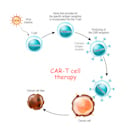
Myocardial Infarction, Ischemia, and Injury
Accurate 12 lead electrocardiogram (ECG) interpretation is an essential diagnostic tool when caring for a patient with clinical symptoms of a suspected acute coronary syndrome (ACS). ACS includes unstable angina, non-ST elevation myocardial infarction (NSTEMI), and ST-elevation myocardial infarction (STEMI) (Amsterdam et al., 2014; Medline, 2015).
Ischemia is defined as the temporary deprivation of myocardial oxygenation resulting in ST-segment and/or T wave inversion on the ECG. These ST-T wave abnormalities typically return to a normal ST on the isoelectric line and upright T wave position when the myocardial oxygen supply meets the demand (Coviello, 2015; Zafari, 2018). Ischemia is considered a warning sign. The NSTEMI does not have ST elevation on the 12-lead ECG. Instead, they have ST-T wave changes similar to the patient with transient ischemia. There is ST-segment depression and/or T wave inversion on the 12 lead ECG. Acute myocardial injury is characterized by ST-segment elevation, and referred to as STEMI, due to acute damage to myocardial tissues. Infarction is tissue death, or necrosis, from the inadequate blood supply. Elevated cardiac markers, such as troponin, are seen with both NSTEMI and STEMI (Zafari, 2018).
Approximately 790,000 people in the U.S. have myocardial infarctions each year, and of those 114, 000 will die (American Heart Association [AHA], 2017). Each year, an estimated 635,000 Americans have an initial heart attack (defined as the first hospitalized myocardial infarction or coronary heart disease death) and approximately 300,000 have a recurrent attack. It is estimated that an additional 155,000 silent first myocardial infarctions occur each year. Approximately every 34 seconds, one person in the U.S. has a coronary event, and approximately every 1 minute 24 seconds, an individual in the U.S. will die of one (Mozaffarian, et al., 2015). A 12-lead ECG is used as a focal point in treatment decision strategies.
Accurate interpretation of the 12 lead ECG can save your patient's life. This diagnostic tool is used when caring for patients with the suspected acute coronary syndrome. For more information, check out the RN.com courses Diagnosis and Management of Acute Coronary Syndrome and 12 Lead ECGs: Ischemia, Injury, Infarction.
References
American Heart Association (AHA). (2017). Heart disease and stroke statistics 2017 at a glance.
Amsterdam, E. A., Wenger, N. K., Brindis, R. G., Casey, D. E., Ganiats, T. G., Holmes, D. R., ... & Zieman, S. J. (2014). 2014 AHA/ACC guideline for the management of patients with non–ST-elevation acute coronary syndromes: A report of the American College of Cardiology/American Heart Association Task Force on Practice Guidelines. Journal of the American College of Cardiology, 64(24), e139-e228.
Coviello, J. (ed.) (2015). ECG interpretation made incredibly easy! (6th ed.). Philadelphia, PA: Lippincott Williams & Wilkins.
Medline. (2018). Unstable angina.
Mozaffarian, D., Benjamin, E. J., Go, A. S., Arnett, D. K., Blaha, M. J., Cushman, M., ... & Stroke, S. S. (2015). Heart disease and stroke statistics-2015 update: a report from the American heart association. Circulation, 131(4), e29.
Zafari, M. (2018). Myocardial infarction.




